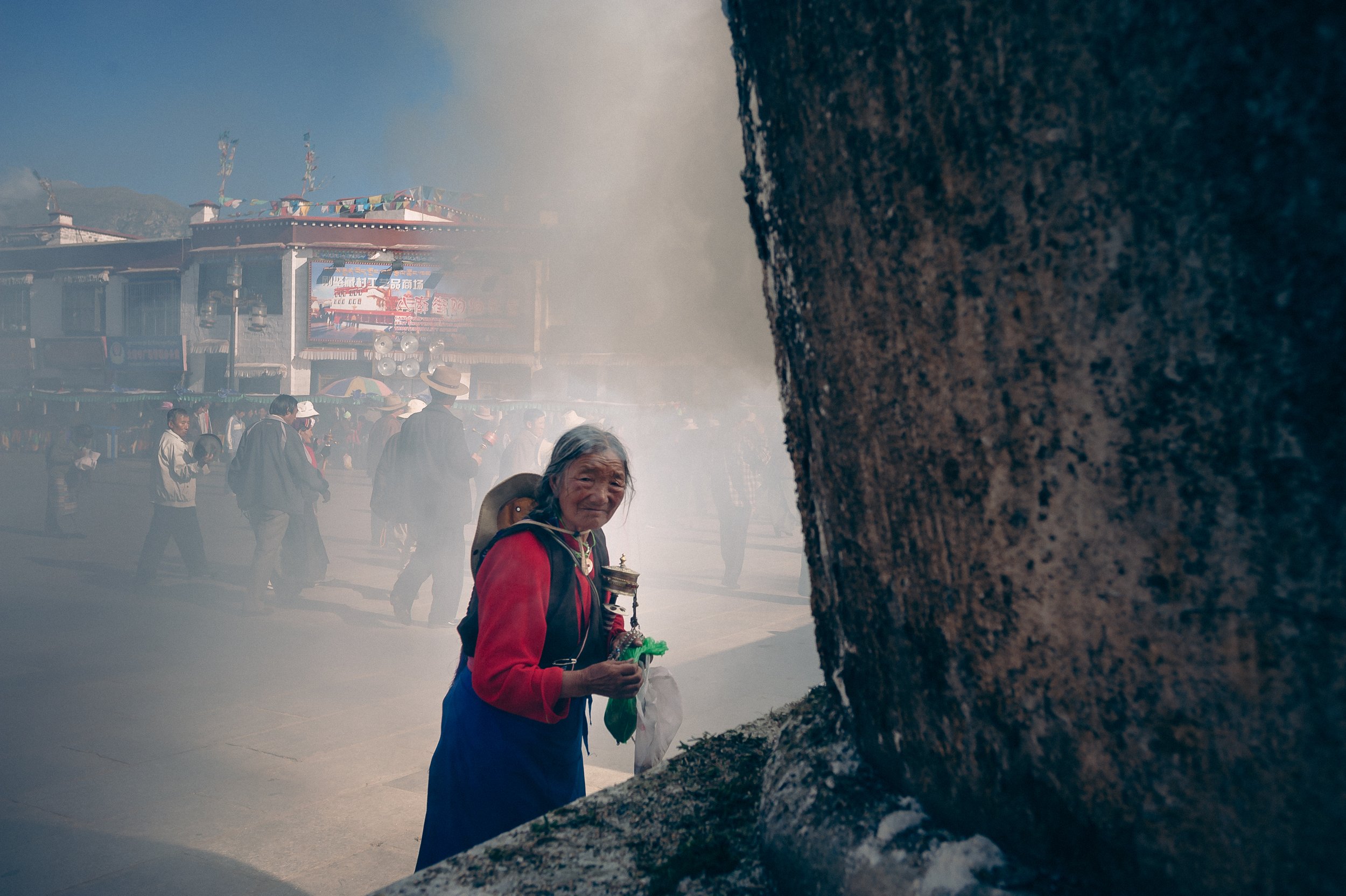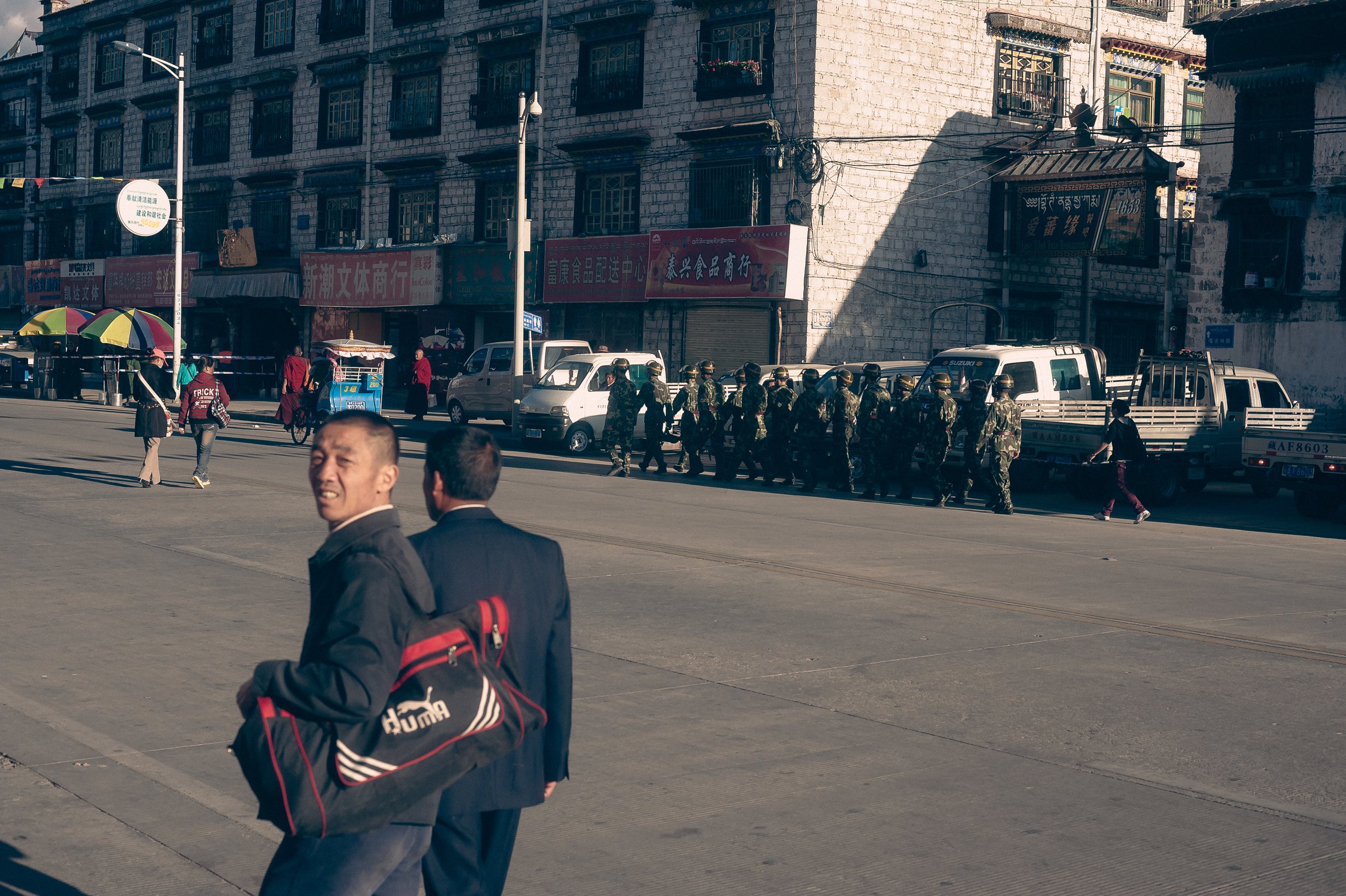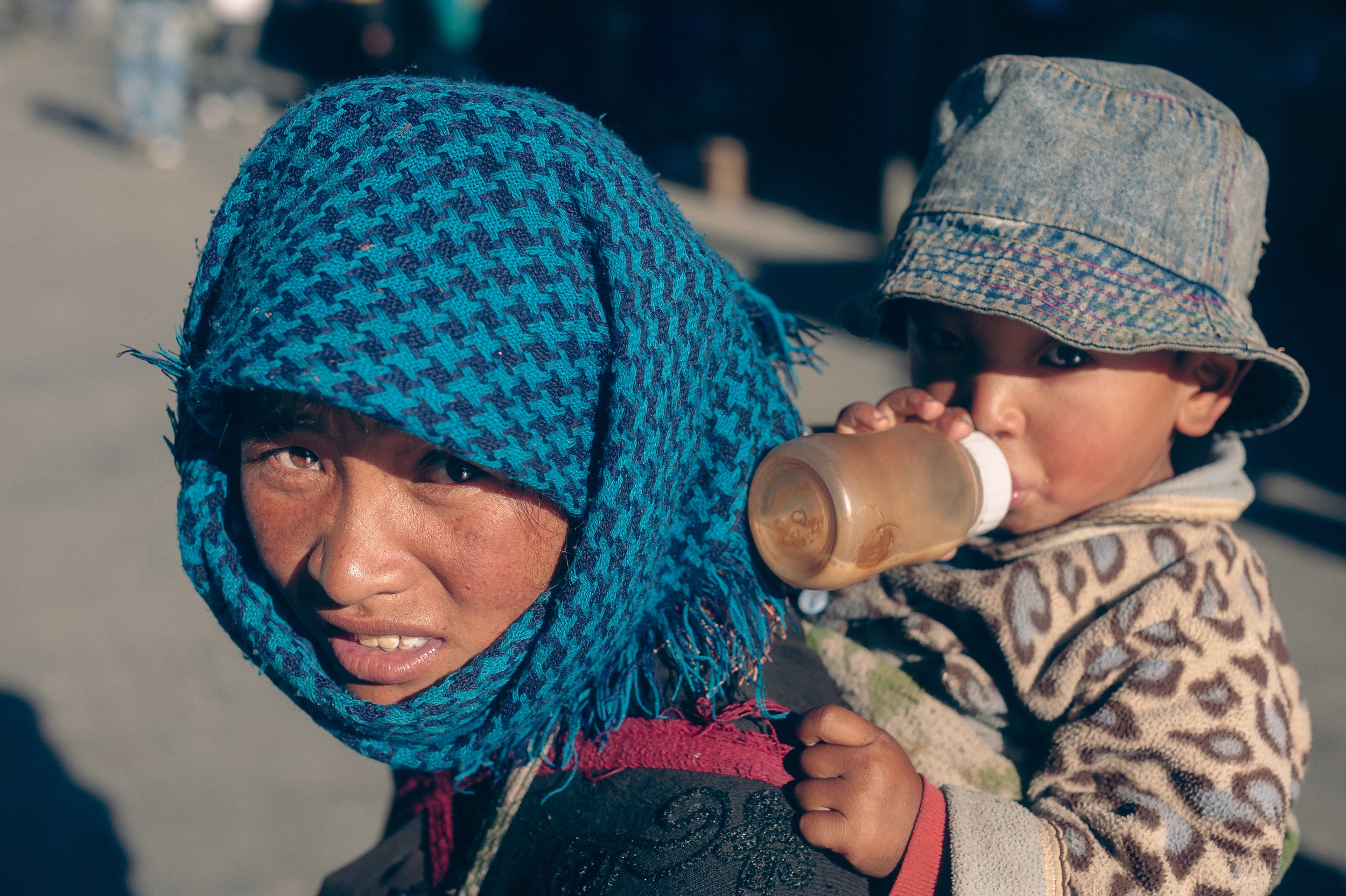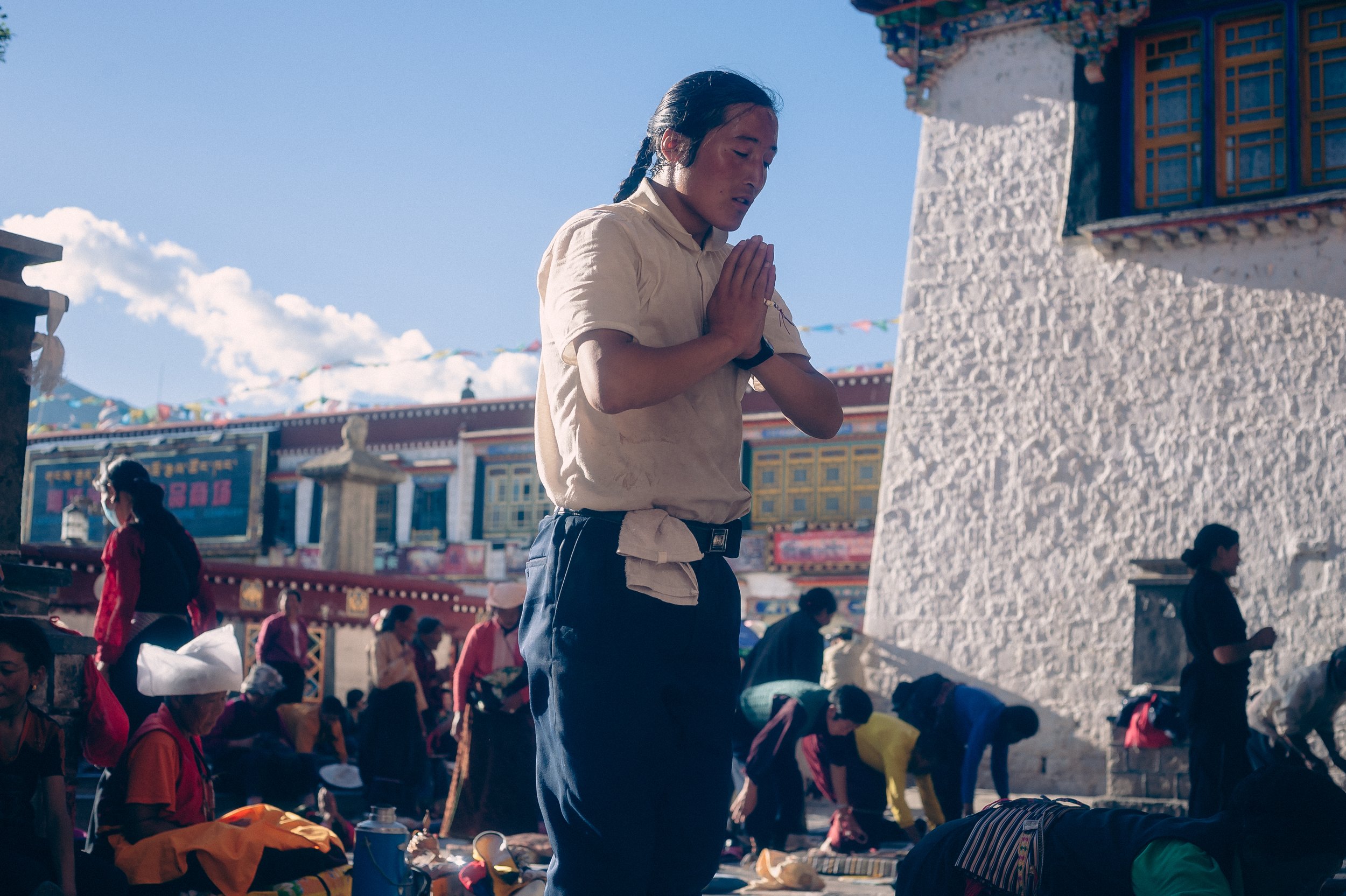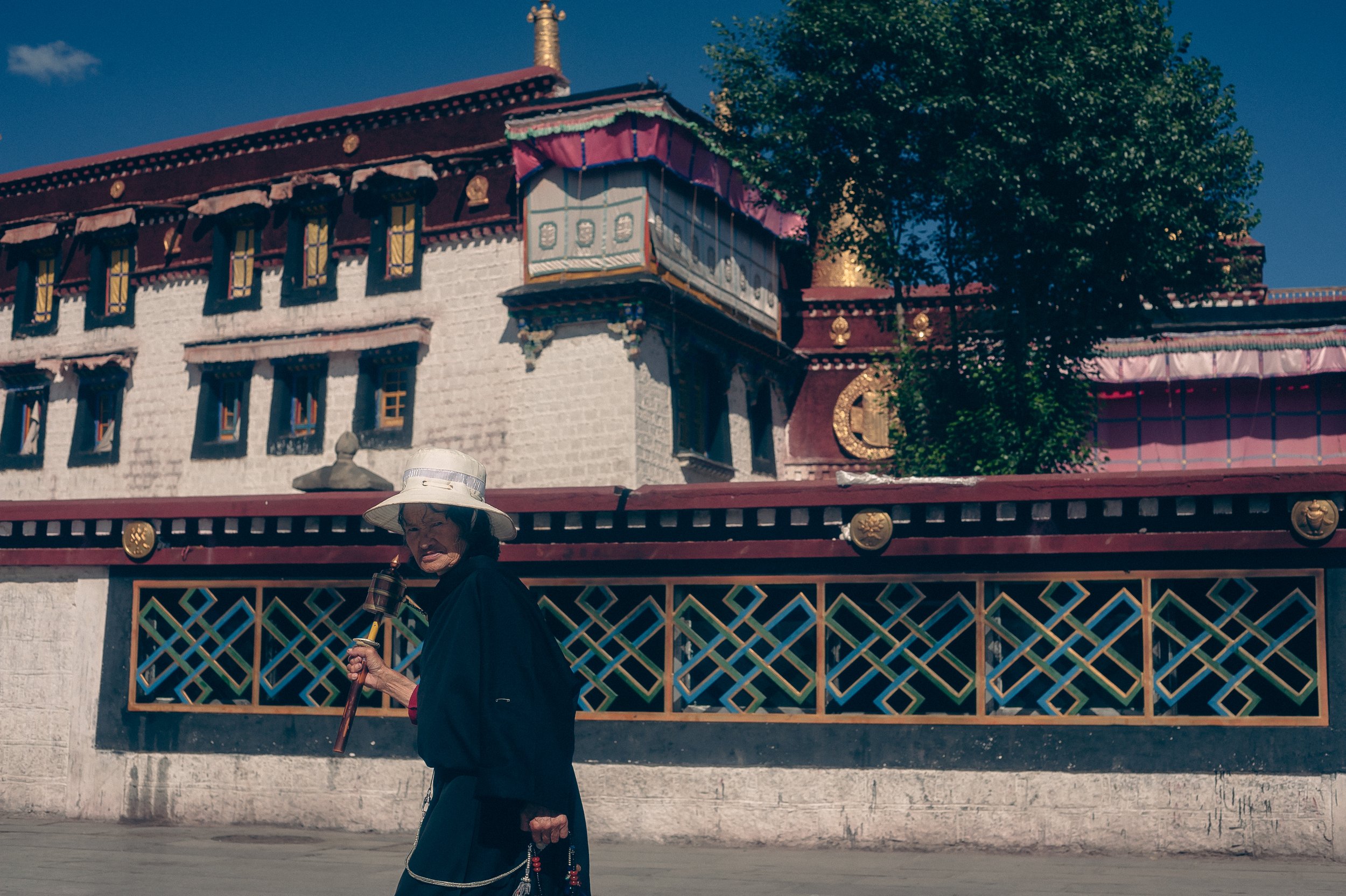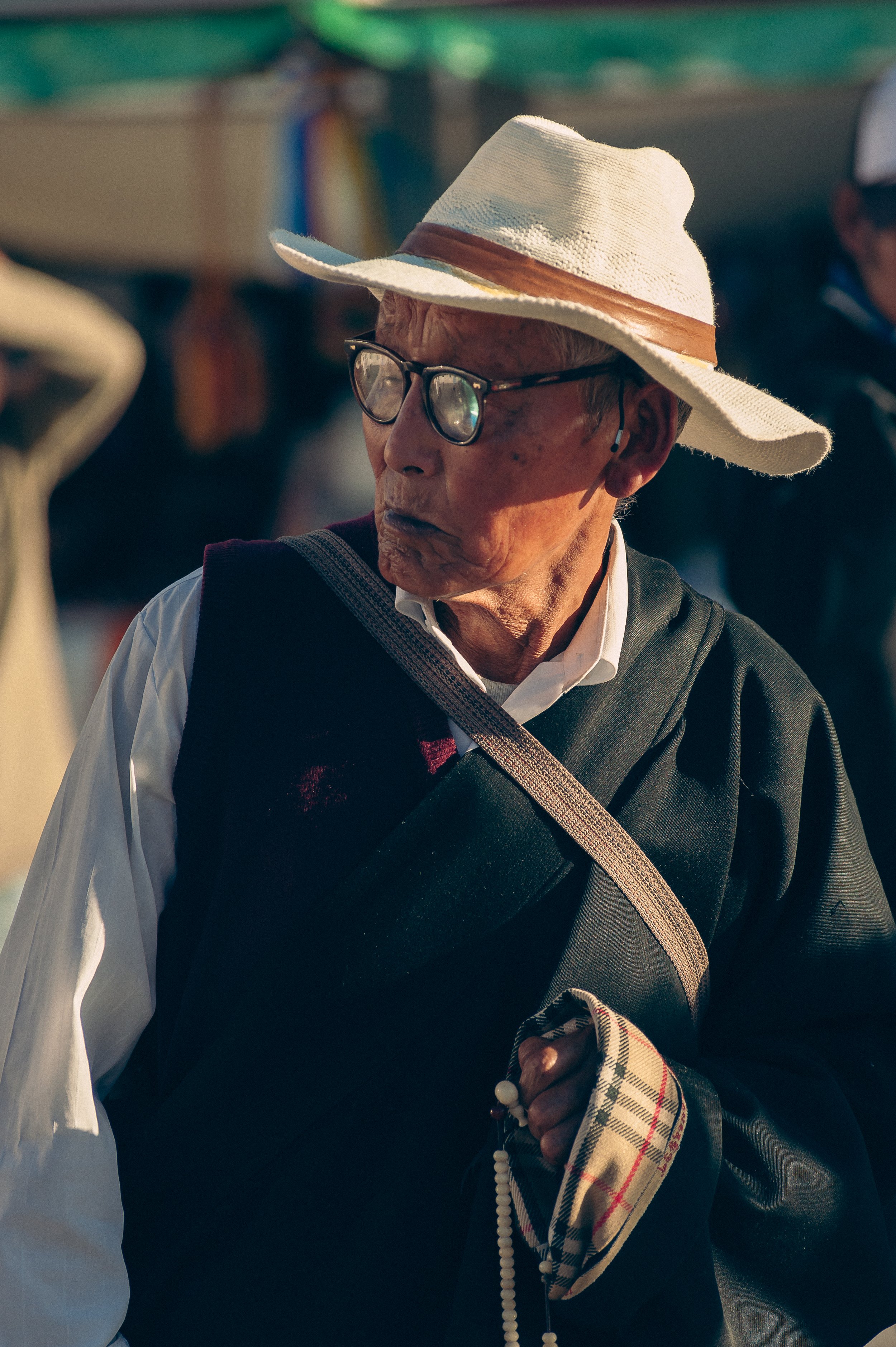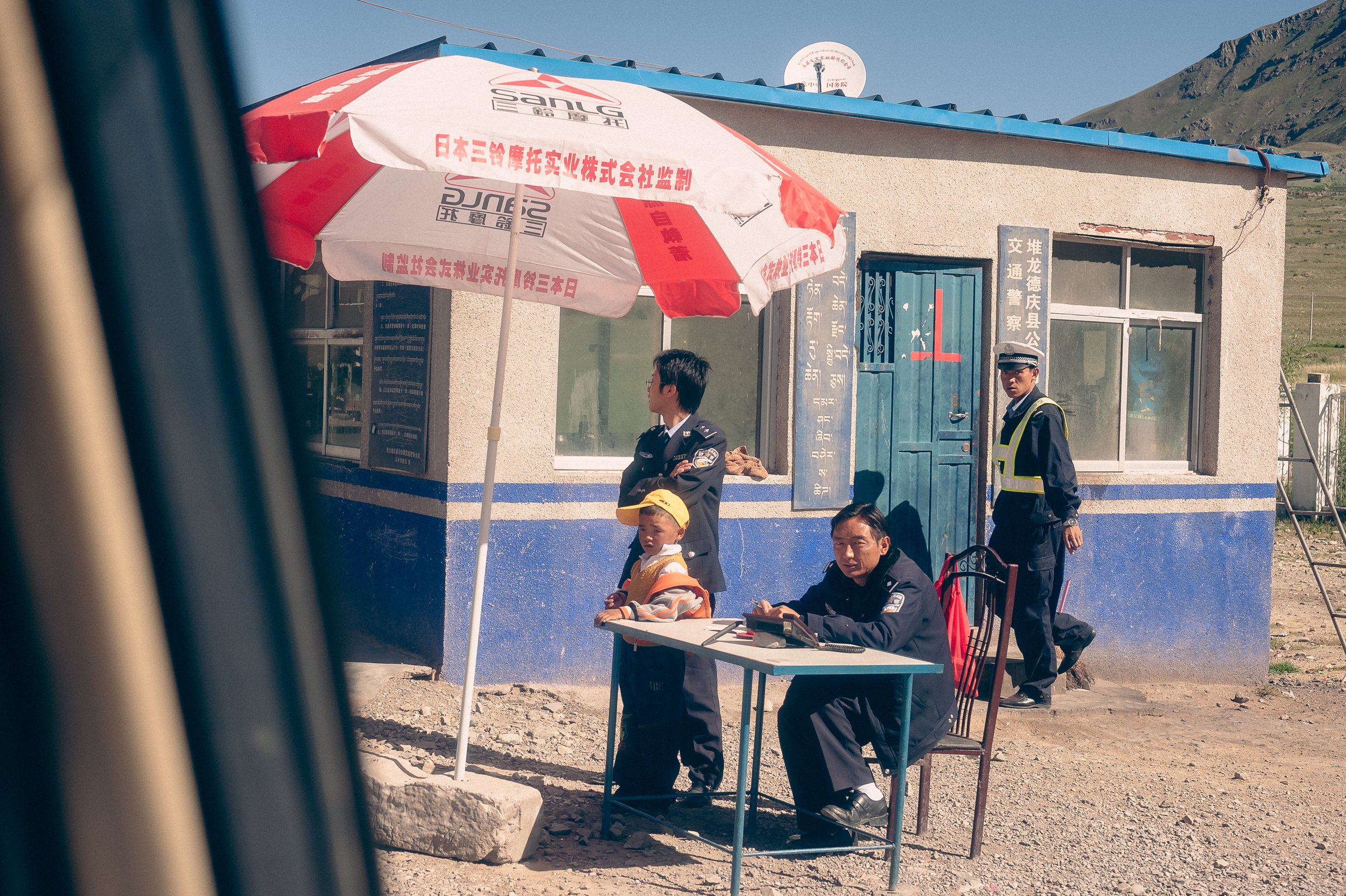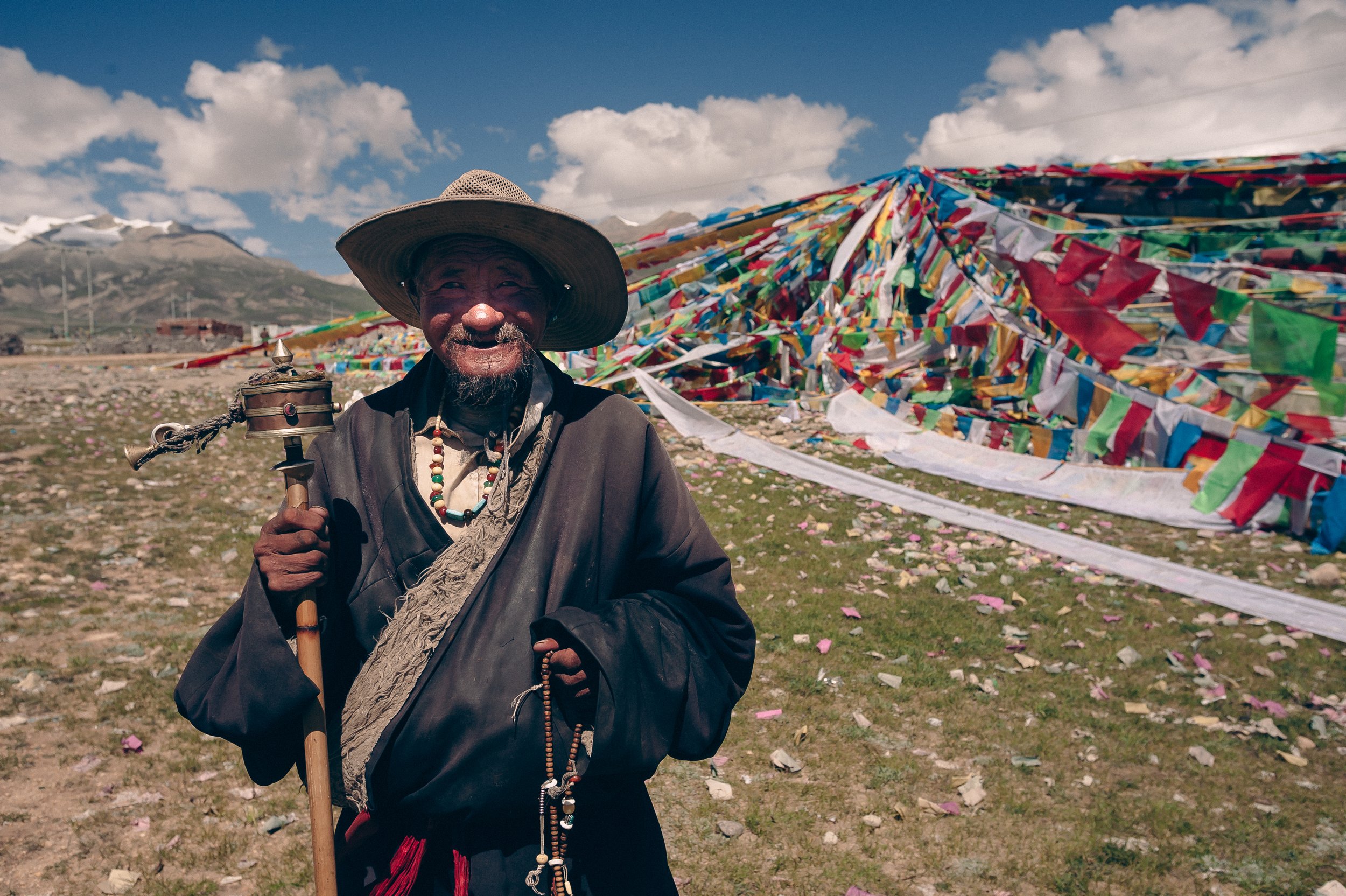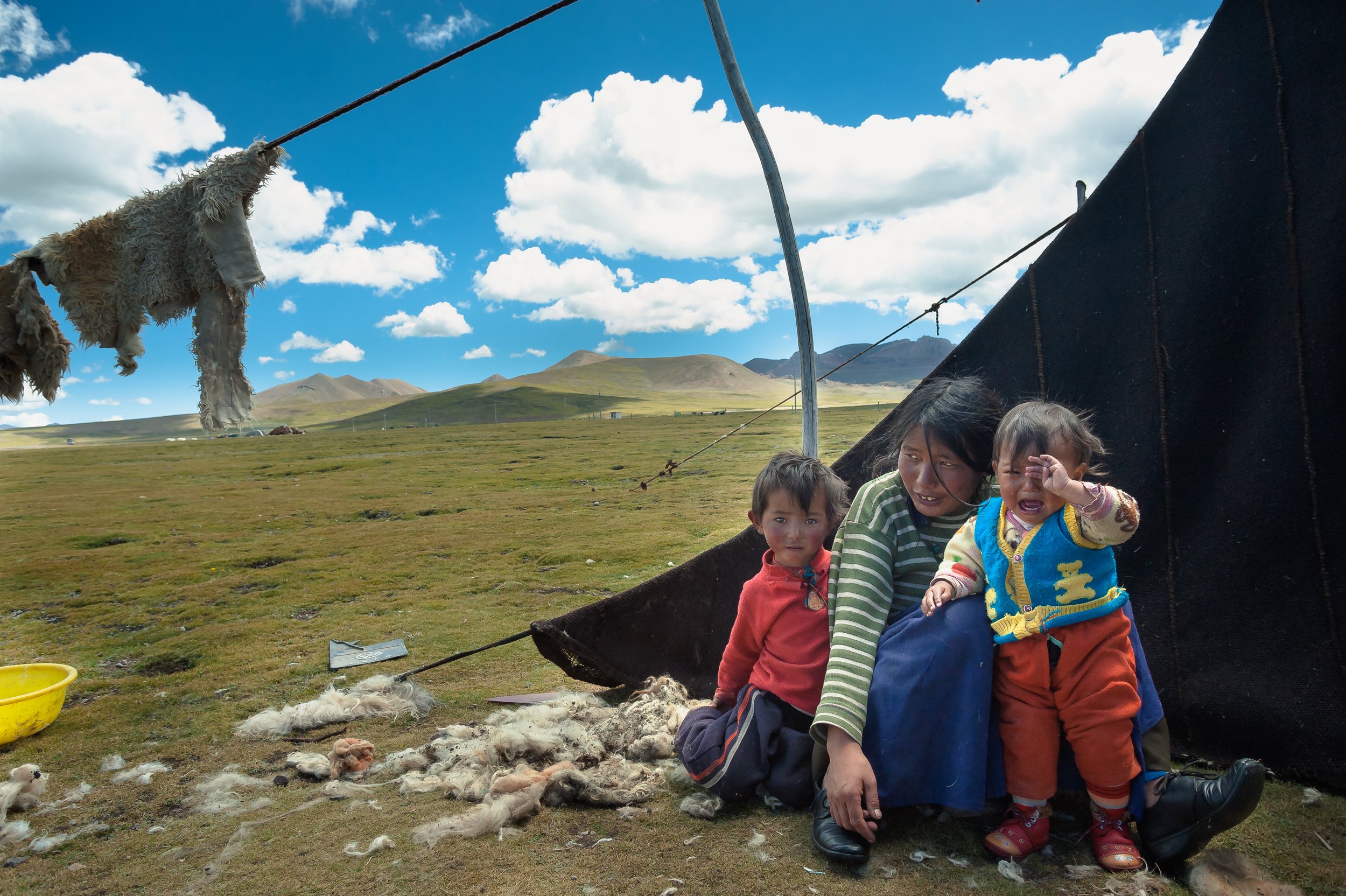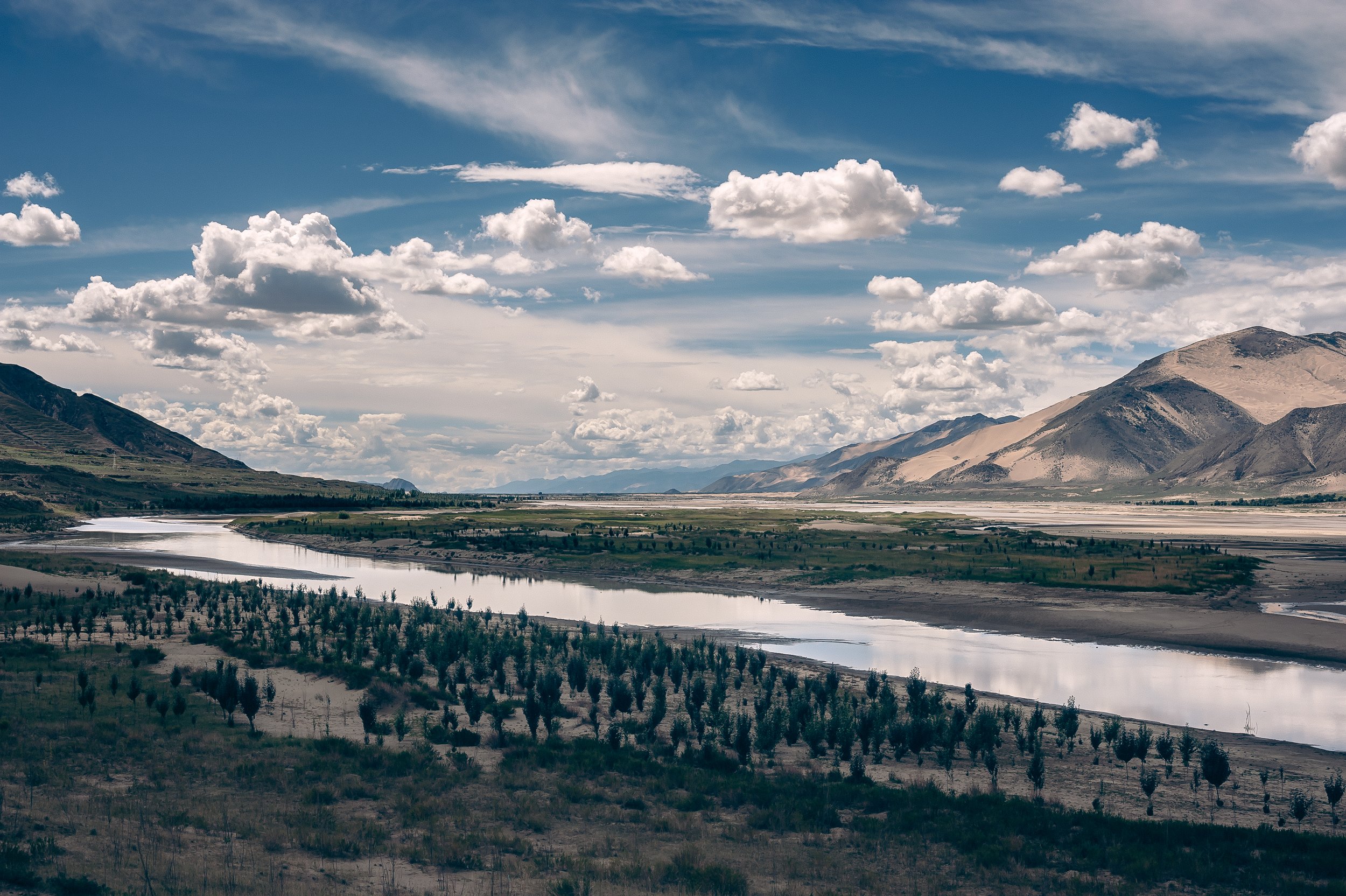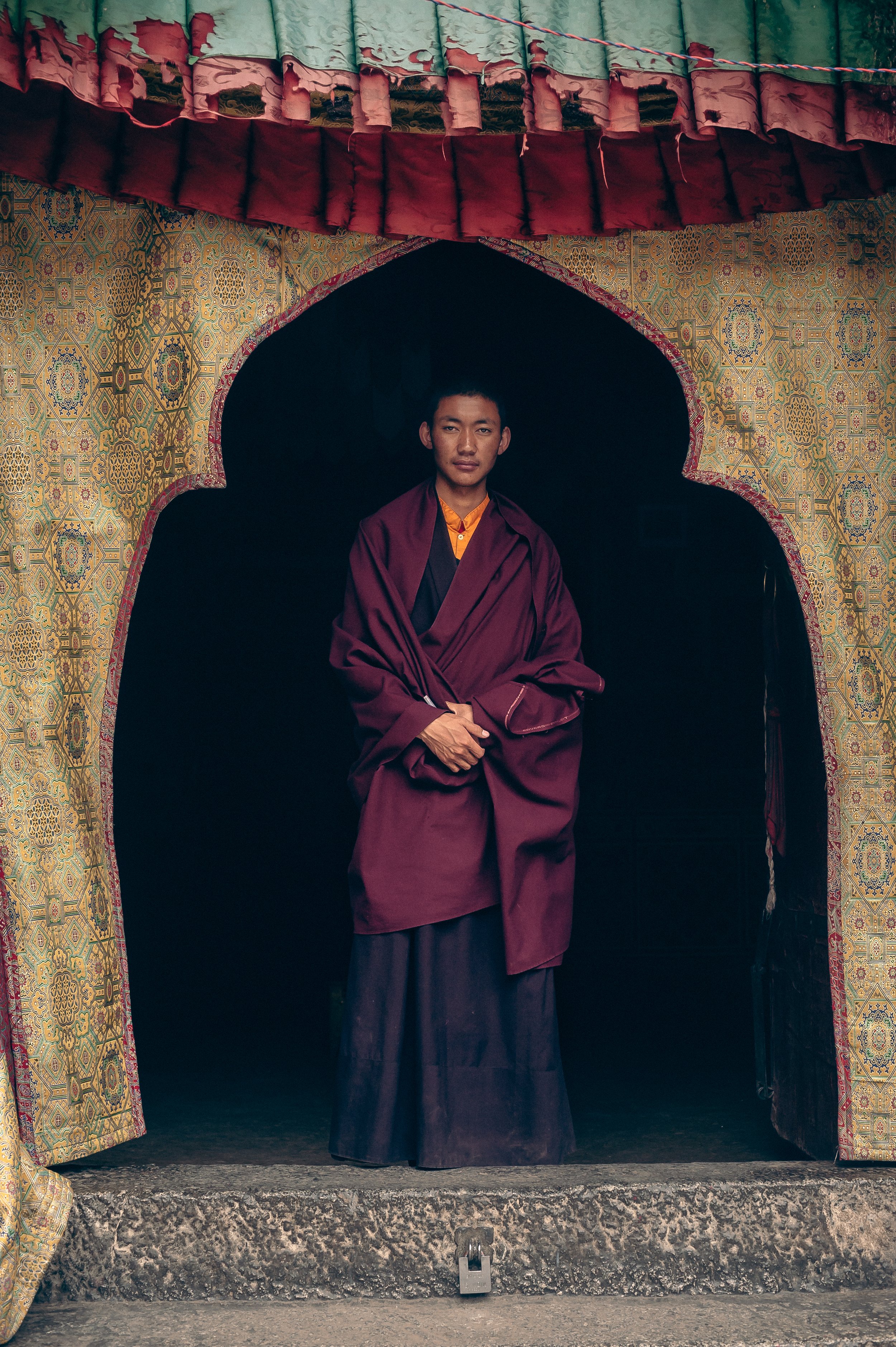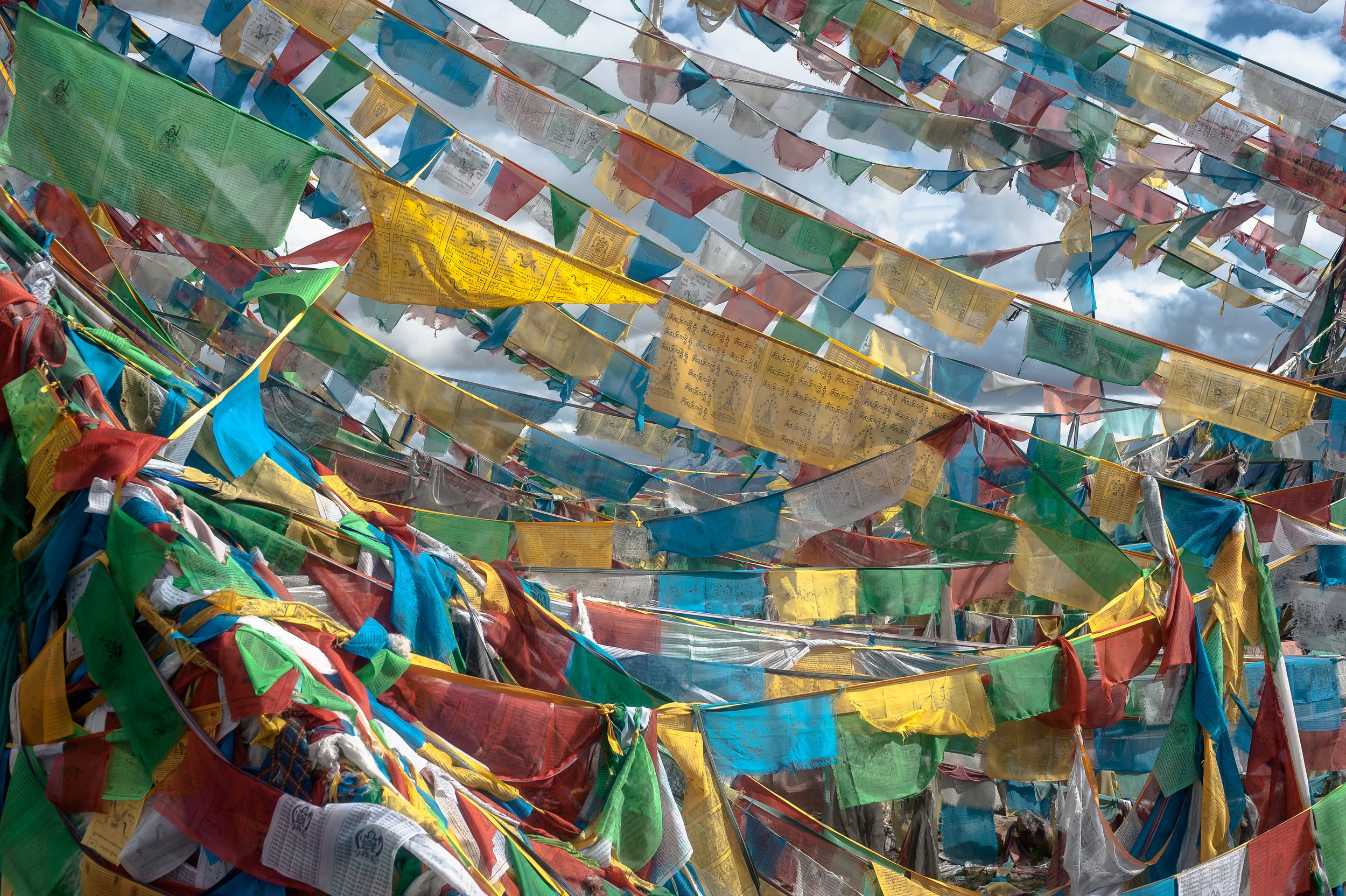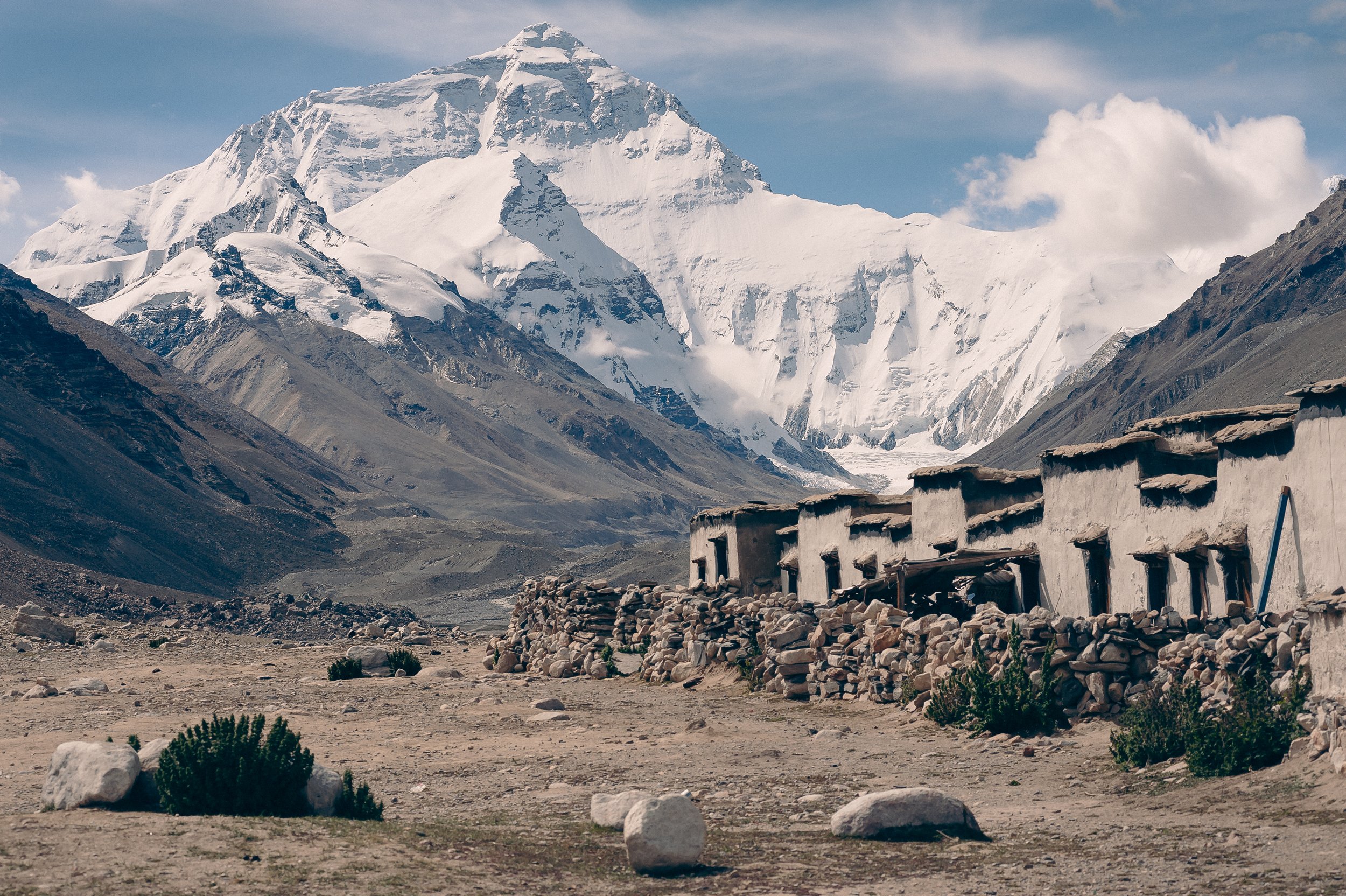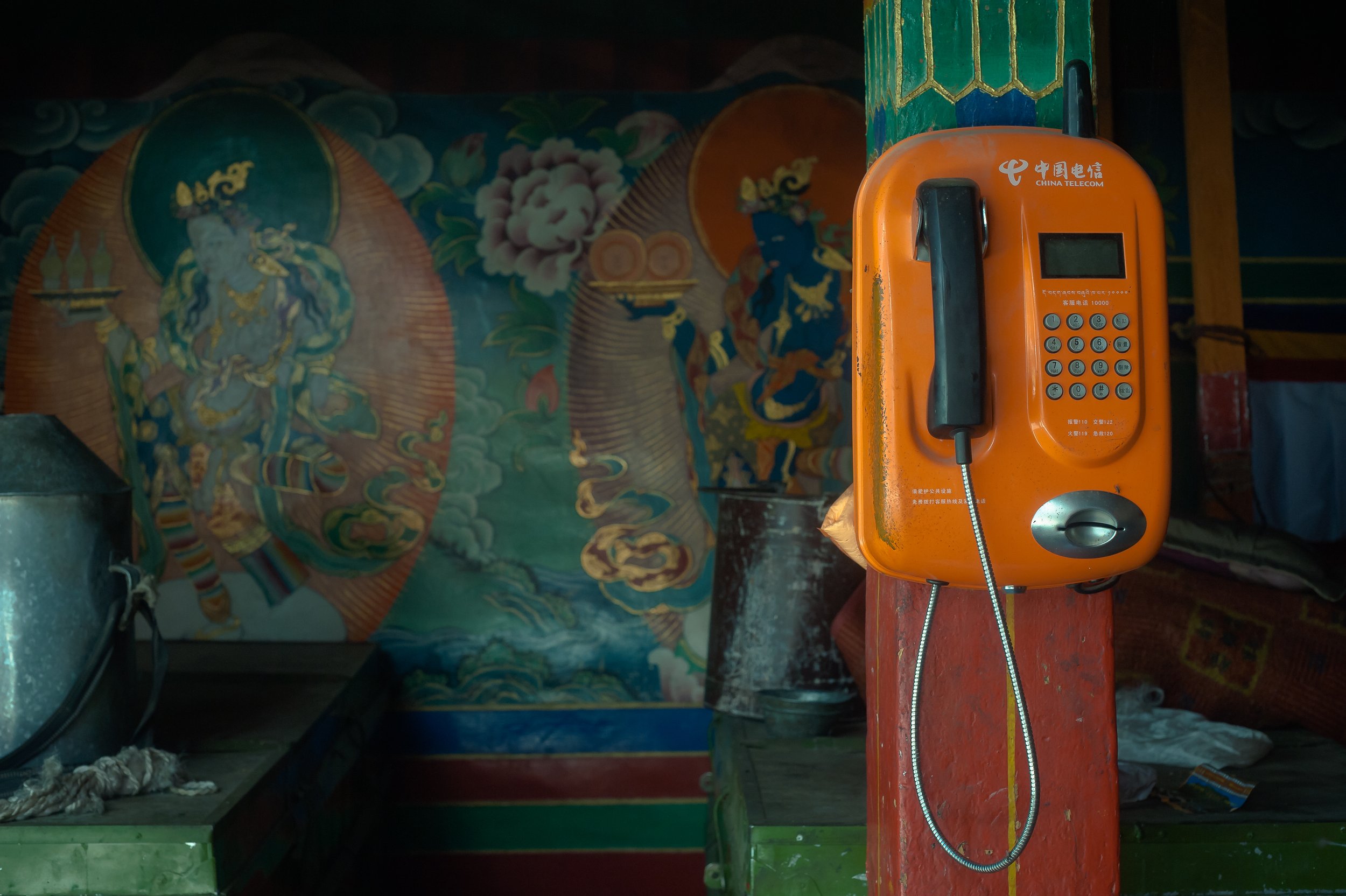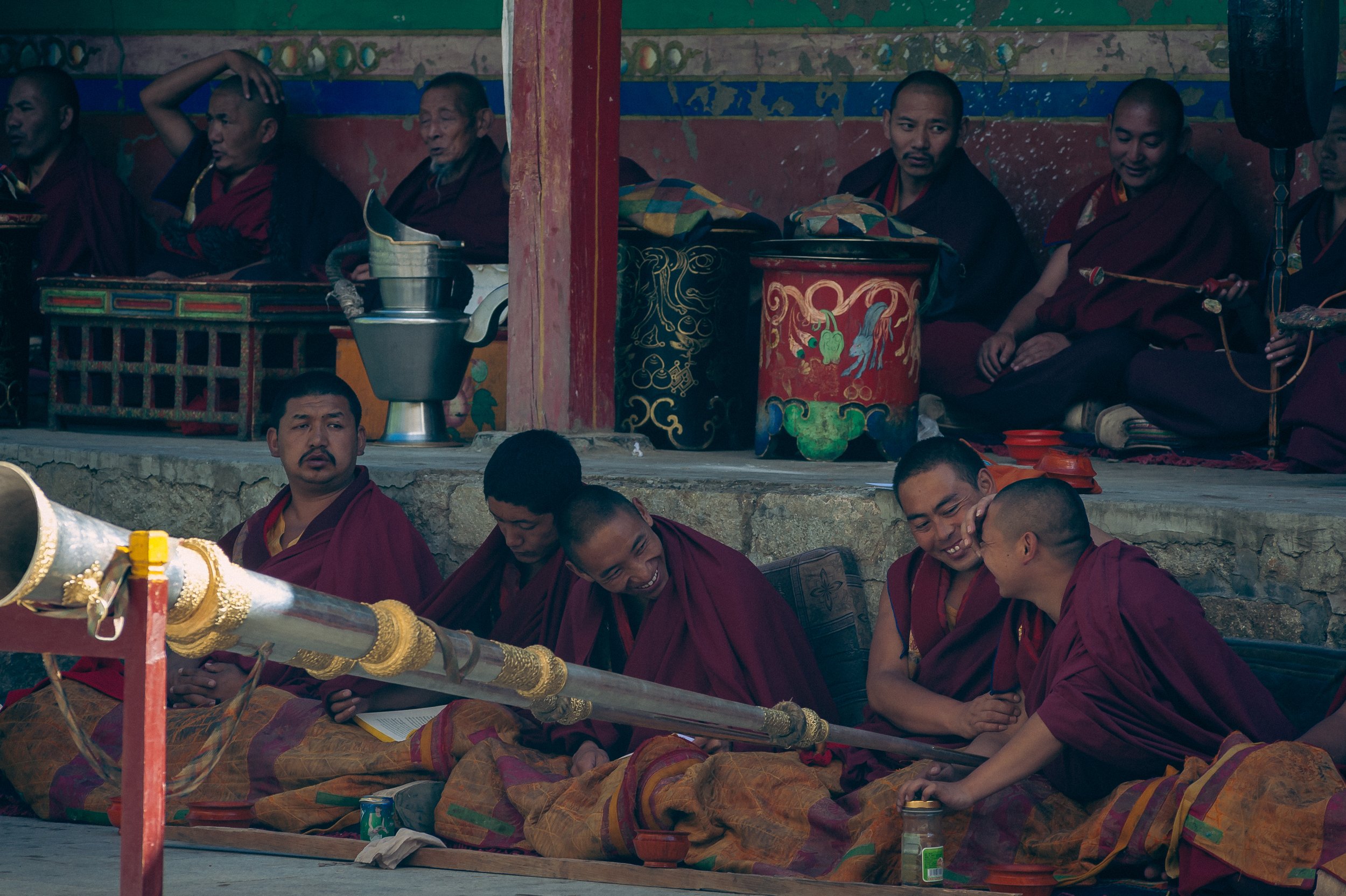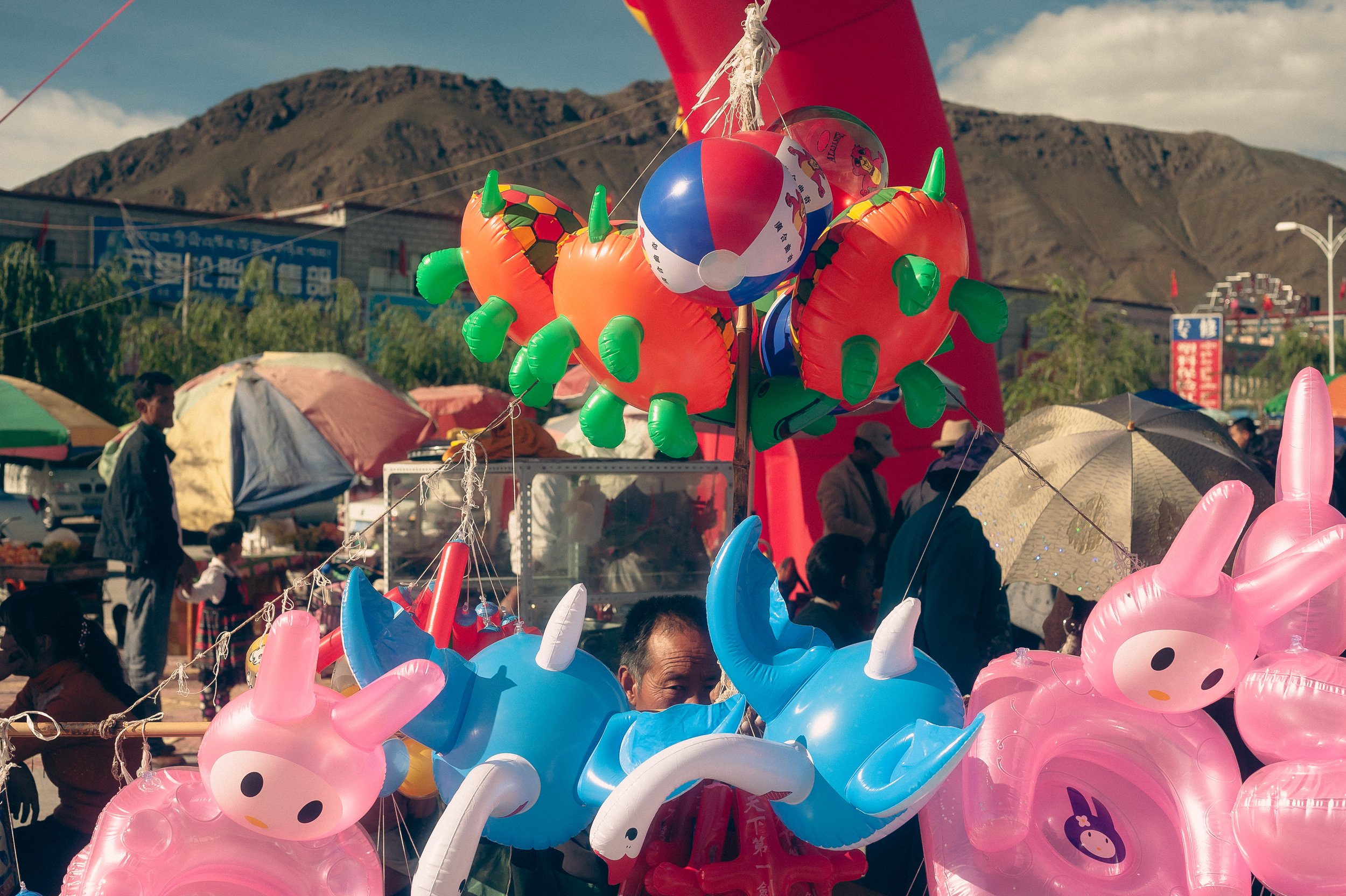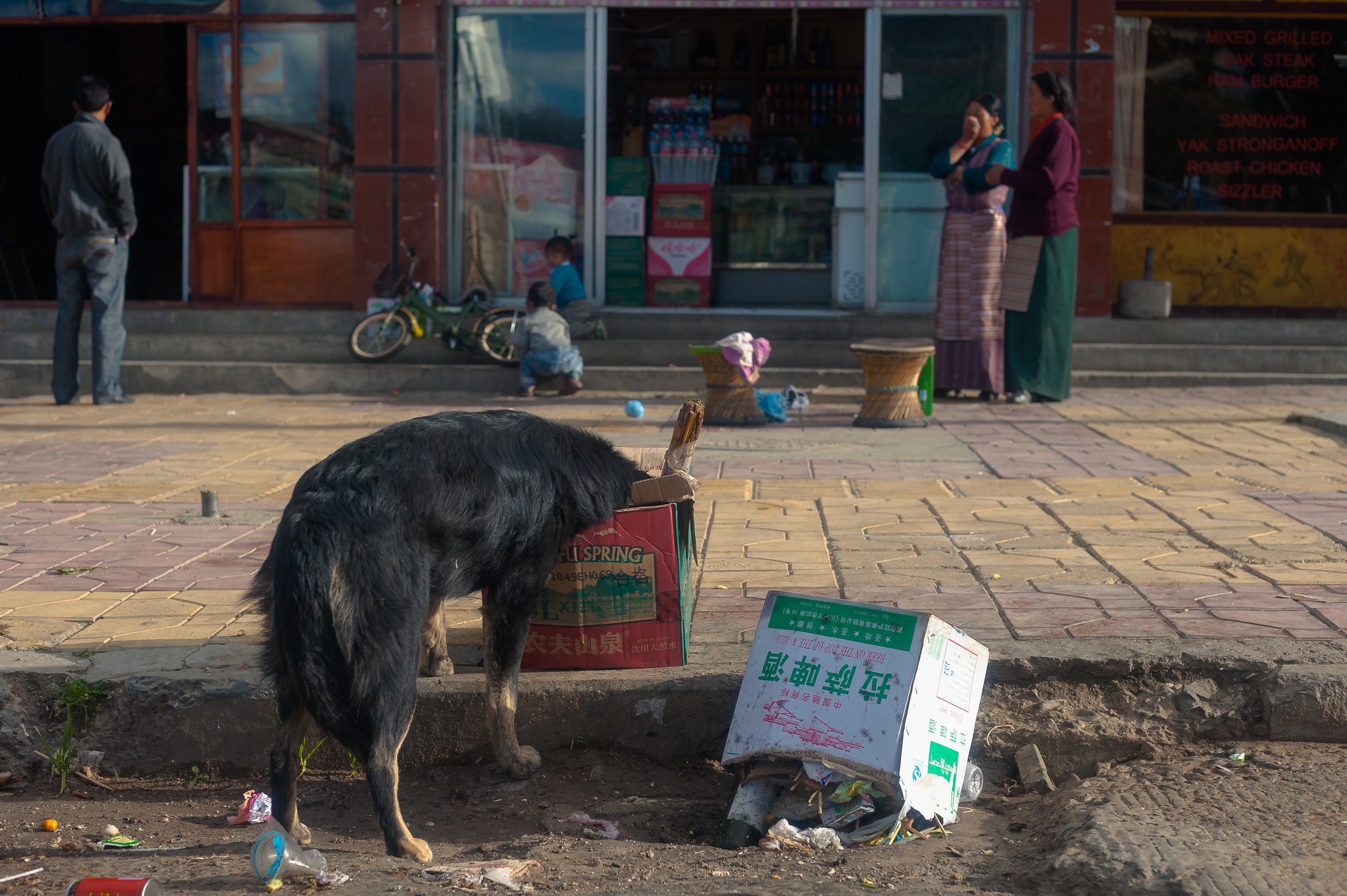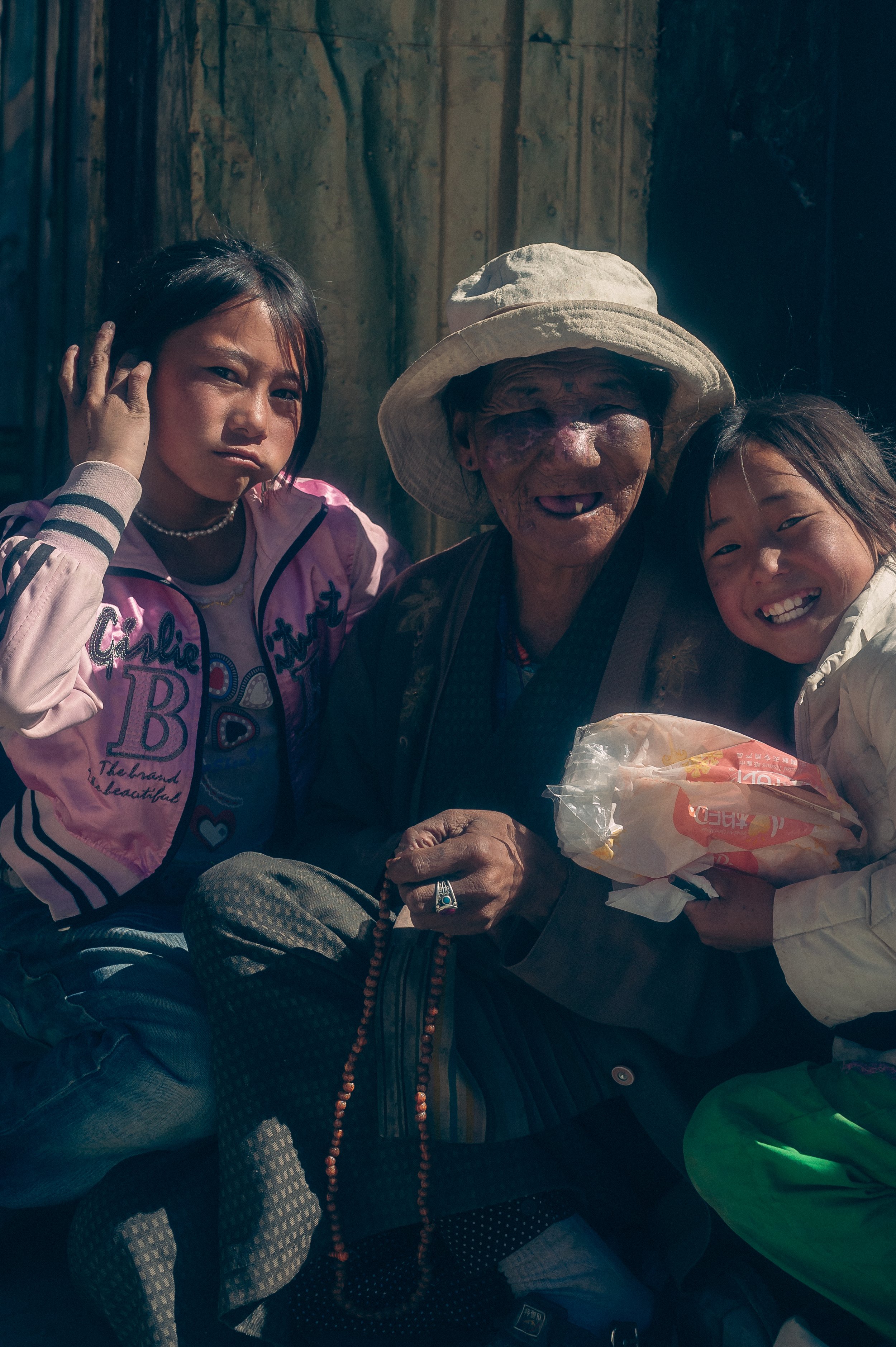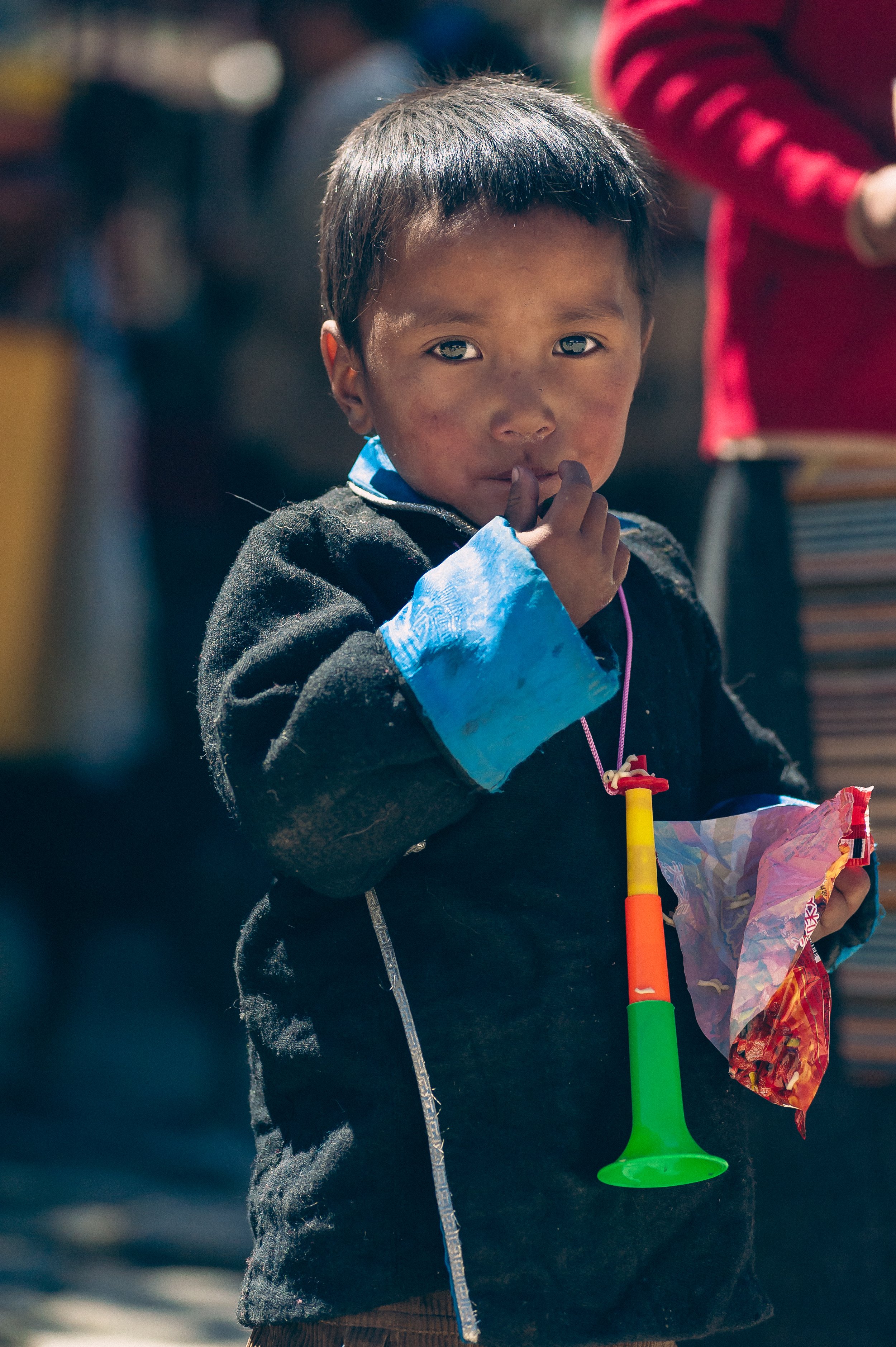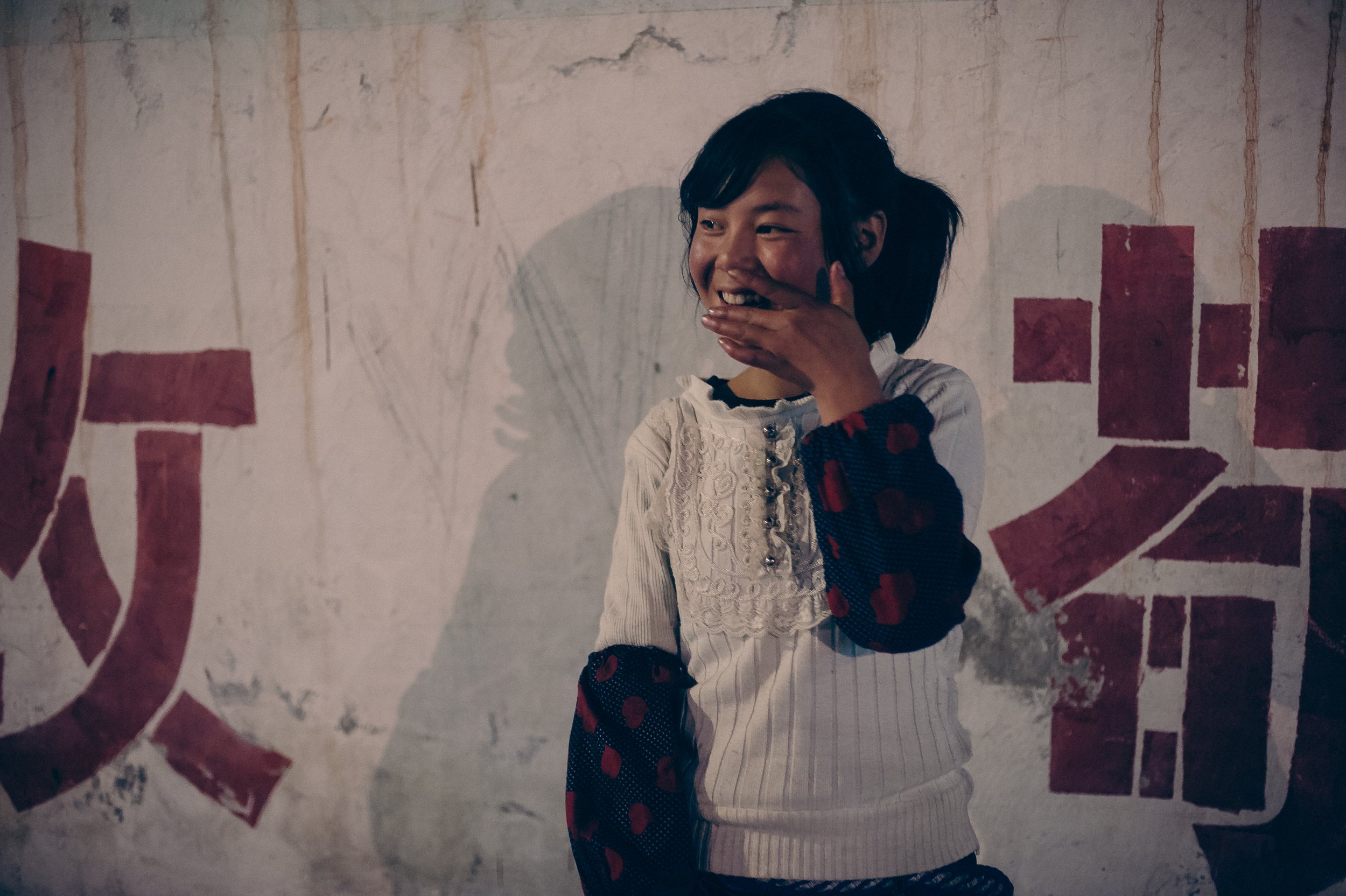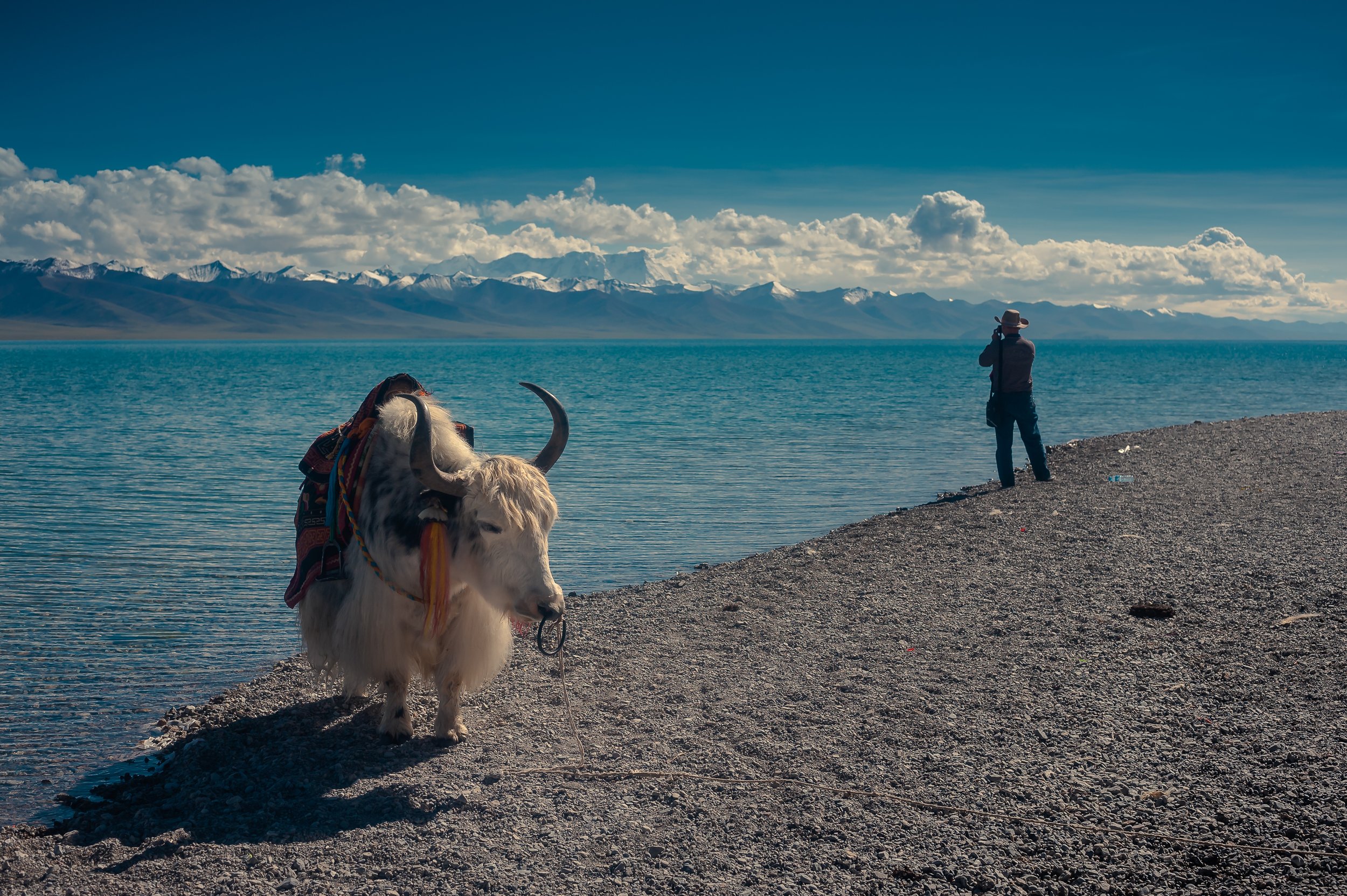
TIBET
For two weeks I explored this amazing country with its beautiful people. The gradual expansion of a large Chinese population over the last 60 years, resettled and funded by the Chinese Government, is putting enormous pressure on Tibetan tradition, lifestyle and culture. Despite this infringement, Tibetans are a people with a strong identity, always ready to share a smile with the world. Hardly ever have I received a warmer welcome into people's homes than here.
ཐུགས་རྗེ་ཆེ
A nomad family at the Namtse Lake.
A nomad father at the Namtse Lake.
A farmer in the Tingri District.
A friendly vendor on the road to Mount Everest.
The Potala Palace in Lhasa. It was the winter palace of the Dalai Lamas from 1649 to 1959, has been a museum since then, and a World Heritage Site since 1994.
A military patrol in the early morning hours outside Jokhang Temple in Lhasa, where, in the past, demonstrations were held. A heavy military presence is therefore felt throughout the entire city. Especially in the early morning hours when Tibetans traditionally gather for morning prayer, the frequency of the patrols increases drastically.
A vendor on Barkhor Square around Jokhang Temple in Lhasa.
A military patrol in the early morning hours outside Jokhang Temple in Lhasa. A heavy military presence is felt throughout the entire city. Especially in the early morning hours when Tibetans traditionally gather for morning prayer, the frequency of the patrols increases drastically.
An old woman practising Sang pūjā, a ritual smoke offering, in the early morning in Lhasa. Around this time the streets around Jokhang Temple and Barkhor Square temple are heavily laden with smoke and the smell of incense.
A military checkpoint in the early morning hours on Barkhor Square in Lhasa. A heavy military presence is felt throughout the entire city.
A military checkpoint in the early morning hours on Barkhor Square in Lhasa. A heavy military presence is felt throughout the entire city.
A military patrol in the early morning hours around Barkhor Square in Lhasa. A heavy military presence is felt throughout the entire city.
A military patrol in the early morning hours around Barkhor Square in Lhasa. A heavy military presence is felt throughout the entire city.
A monk outside Jokhang Temple in Lhasa during morning prayer.
A group of pilgrims inside Jokhang Temple in Lhasa.
A group of pilgrims inside Jokhang Temple in Lhasa.
A young mother outside Jokhang Temple in Lhasa.
Morning prayer outside Jokhang Temple in Lhasa.
Morning prayer outside Jokhang Temple in Lhasa.
The Potala Palace in Lhasa. It was the winter palace of the Dalai Lamas from 1649 to 1959, has been a museum since then, and a World Heritage Site since 1994.
Inside the Potala Palace in Lhasa. It was the winter palace of the Dalai Lamas from 1649 to 1959, has been a museum since then, and a World Heritage Site since 1994.
Inside the Potala Palace in Lhasa. It was the winter palace of the Dalai Lamas from 1649 to 1959, has been a museum since then, and a World Heritage Site since 1994.
Children flying a kite on the Barkhor in Lhasa.
The Barkhor in Lhasa.
Outside Jokhang Temple in Lhasa.
The Barkhor in Lhasa.
Young monks in Lhasa.
The Barkhor in Lhasa.
The Barkhor in Lhasa in the early morning.
The Barkhor in Lhasa.
Outside Jokhang Temple in Lhasa.
A monk expressing his gratitude after arrival in front of Jokhang Temple - the end of a hundreds-of-miles-long pilgrimage.
Outside Jokhang Temple in Lhasa.
A warm welcome to a family's home in Lhasa.
A Chinese checkpoint in the Tsang region. The Chinese government monitors any kind of commotion very closely throughout Tibet. The distance between two checkpoints has to be covered within a clearly allocated amount of time, to avoid any lingering or longer conversations with locals.
A checkpoint on the way to Namtso Lake.
Encounter in the Tsang region.
A different view of Yamdrok Lake, one of the three holy Tibetan lakes.
A traditionally dressed party around Basumtso Lake gathered for a Thanksgiving celebration.
A traditionally dressed party around Basumtso Lake gathered for a Thanksgiving celebration.
A traditionally dressed party around Basumtso Lake gathered for a Thanksgiving celebration.
A traditionally dressed party around Basumtso Lake gathered for a Thanksgiving celebration.
A horseman around Basumtso Lake who is part of a Thanksgiving celebration.
Outside the home of a nomad family in the Namtse region.
Outside the home of a nomad family in the Namtse region.
Outside the home of a nomad family in the Namtse region.
Inside the home of a nomad family in the Namtse region.
Inside the home of a nomad family in the Namtse region.
Namtso Lake, one of the three Tibetan holy lakes.
A farm in the Tingri region.
A farmer in the Tingri region.
A small road-side shop in the Tingri region.
Travelling workers in the Tingri region.
The Brahmaputra outside Lhasa.
A boy in the Tingri region.
A monk at Samye Monastery, built in the second half of the 8th century. Samye, full name Samye Mighur Lhundrub Tsula Khang and Shrine of Unchanging Spontaneous Presence, is the first Tibetan Buddhist and Nyingma monastery built in Tibet, during the reign of King Trisong Deutsen.
A road in the Tingri District.
In a small village in the Tingri region.
Prayer flags close to Mount Everest Base Camp.
Local children on the road to Shigatse.
A local girl on the road to Shigatse.
A local girl on the road to Shigatse.
Local children on the road to Shigatse.
A local boy on the road to Shigatse.
Mischief on the road to Shigatse.
The road to Mount Everest.
Mount Everest.
A waitress in a small restaurant in the Everest Base Camp.
A scene in the Everest Base Camp.
In a small village in the Tingri region.
In a small village in the Tingri region.
In a small village in the Tingri region.
In a small village in the Tingri region.
In a small village in the Tingri region.
In a small village in the Tingri region.
In a small village in the Tingri region.
In a small village in the Tingri region.
In a small village in the Tingri region.
In a small village in the Tingri region.
In a small village in the Tingri region.
In a small village in the Tingri region.
Yamdrok Lake, one of the three holy Tibetan lakes. Lake Yamdroktso is considered the most beautiful water in Tibet. Its name literally means "Green Jade Lake on Pasture.” According to tradition, this lake was formed from the turquoise jewels of a goddess’ earring. This goddess hurled the jewels toward Earth for the Tibetans.
Tashi Lhunpo Monastery, the traditional monastic seat of the Panchen Lama. The Panchen Lama is one of the most important figures in the Gelug tradition, with its spiritual authority second only to the Dalai Lama.
Novice monks in Tashi Lhunpo Monastery, the traditional monastic seat of the Panchen Lama. The Panchen Lama is one of the most important figures in the Gelug tradition, with its spiritual authority second only to the Dalai Lama.
Monks during a celebration in Tashi Lhunpo Monastery, the traditional monastic seat of the Panchen Lama. The Panchen Lama is one of the most important figures in the Gelug tradition, with its spiritual authority second only to the Dalai Lama.
Outside a Chinese trade fair in Shigatse.
Outside a Chinese trade fair in Shigatse.
A street scene in Shigatse.
During a Chinese trade fair in Shigatse.
Invitation to a family home in Shigatse. On my strolls through the cities and towns, I was always met with friendly curiosity and regular invitations into people's homes. Communication very much depended on the distinguished use of our extremities. A shot or two of varying arbitrary alcoholic liquids usually helped the process along. After the third shot or so, as seen here, it felt like language was, in fact, a negligible means of communication.
A grandmother with her grandkids outside Tashi Lhunpo Monastery, the traditional monastic seat of the Panchen Lama. The Panchen Lama is one of the most important figures in the Gelug tradition, with its spiritual authority second only to the Dalai Lama. It is the second-largest pilgrimage site in Tibet.
A pilgrim with her monetary offerings in Tashi Lhunpo Monastery, the traditional monastic seat of the Panchen Lama. The Panchen Lama is one of the most important figures in the Gelug tradition, with its spiritual authority second only to the Dalai Lama. It is the second-largest pilgrimage site in Tibet.
In Tashi Lhunpo Monastery, the traditional monastic seat of the Panchen Lama. The Panchen Lama is one of the most important figures in the Gelug tradition, with its spiritual authority second only to the Dalai Lama. It is the second-largest pilgrimage site in Tibet.
In Tashi Lhunpo Monastery, the traditional monastic seat of the Panchen Lama. The Panchen Lama is one of the most important figures in the Gelug tradition, with its spiritual authority second only to the Dalai Lama. It is the second-largest pilgrimage site in Tibet.
In Tashi Lhunpo Monastery, the traditional monastic seat of the Panchen Lama. The Panchen Lama is one of the most important figures in the Gelug tradition, with its spiritual authority second only to the Dalai Lama. It is the second-largest pilgrimage site in Tibet.
A night scene in Lhasa.
A night scene in Lhasa.
A night scene in Lhasa.
A night scene in Lhasa.
A tourist supper, offering visitors traditional food and dance on their last night in Lhasa.
A tourist supper, offering visitors traditional food and dance on their last night in Lhasa.









